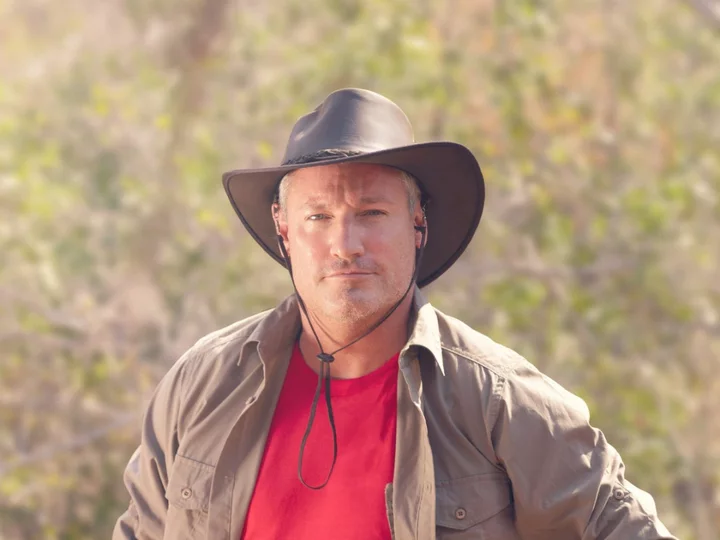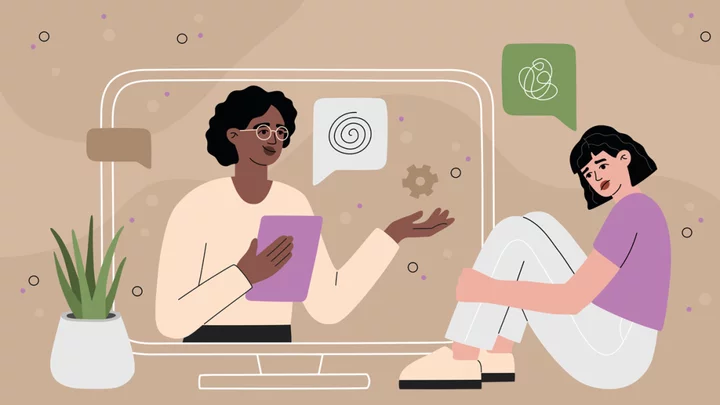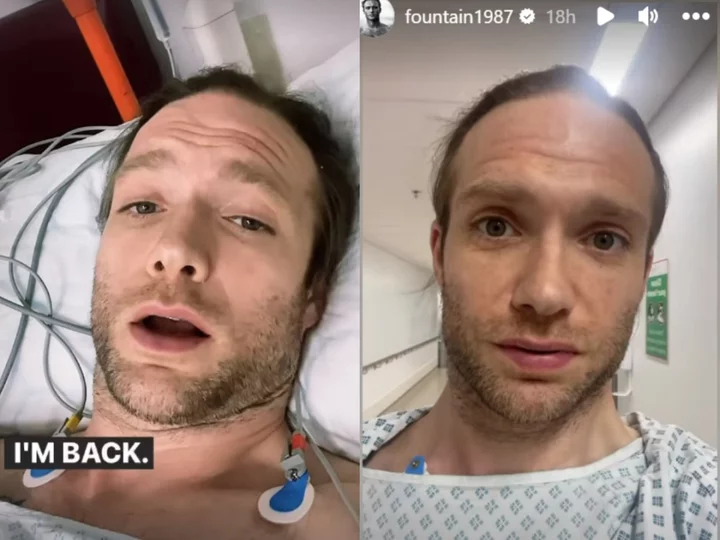
How to check if you have skin cancer: Symptoms and signs to look out for
It is the most common form of cancer in Britain and kills around 2,100 people in the UK each year, but still a “shocking” number of people remain unaware of the dangers of skin cancer, its links to sunburn, and how to spot the signs of this deadly disease. An overwhelming 77 per cent of people would not recognise signs of a melanoma – a malignant skin cancer tumour – despite the majority of Britons worrying about skin cancer, a new study by the British Association of Dermatologists (BAD) has found. There are two types of skin cancer; melanoma, the deadliest form of which around 13,000 new cases are diagnosed each year in the UK, and non-melanoma, of which there are more than 100,000 new cases diagnosed every year. The risk of melanoma is doubled if a person has had five or more sunburns at any age, the Skin Care Foundation states, but adds that experiencing just one blistering sunburn in childhood or adolescence more than doubles a person’s chances of developing a melanoma later in life. Non-melanoma comes in two most common forms: basal cell carcinoma, which accounts for about 75 per cent of skin cancers, and squamous cell carcinoma, which accounts for about 20 per cent. It is mainly caused by overexposure to UV light. But despite the serious risks of cancer posed from sunburn, nearly three quarters of people surveyed by BAD admitted to having been burned in the past year alone, while 40 per cent of people were found to never check themselves for signs of cancer. Here is how to check for possible signs of melanoma and non-melanoma skin cancer: Melanoma: The NHS states the first signs of a melanoma is often a new mole, or the change in appearance of an existing mole. Moles are usually round or oval, with a smooth edge, which is not bigger than 6mm in diameter. Any change in size, shape, or colour, any bleeding, crustiness or itchiness, or how painful a mole is should be shown to a doctor. The NHS has an ABCDE checklist to help people tell the difference between a normal mole and a melanoma: Asymmetrical – melanomas have two very different halves and are an irregular shape. Border – melanomas have a notched or ragged border. Colours – melanomas will be a mix of two or more colours. Diameter – melanomas are larger than 6mm (1/4 inch) in diameter. Enlargement or elevation – a mole that changes size over time is more likely to be a melanoma. Non-melanoma: Non-melanoma usually appears as a lump or discoloured patch of skin that does not heal. If a person experiences on of these patches that do not heal after four weeks, they should see their GP. Signs of Basal cell carcinoma can look like a small red or pink lump, though it can also appear as a pearly-white or waxy-looking lump, or it can also appear as a red or scaly patch of skin. The lump, whether pink or white, will grow slowly and can become crusty or bleed, or become a painless ulcer. Signs of Squamous cell carcinoma are the appearance of a firm pink lump. This lump could have a flat, scaly or crusted surface, often bleeds easily and feels tender to touch and can also become a painless ulcer. Read More UK skin cancer statistics 'shocking' Skin cancer referrals up 41 per cent in 5 years Wolverine star Hugh Jackman treated for skin cancer Cheap holidays blamed for huge rise in skin cancers
2023-05-15 19:16

Children In Need removes Pudsey’s bandana to show not all challenges are visible
BBC Children In Need has launched a new Behind The Bandana campaign to mark Mental Health Awareness Week. The charity has temporarily removed mascot Pudsey’s eye covering to show “not all of the challenges that children and young people may be facing are visible”, the broadcaster said. The campaign encourages conversations between children and parents, carers and other trusted adults “to ensure no child faces their emotional and mental health challenges alone”. Former Love Island contestant Dr Alex George, who has campaigned for better mental health after the death of his 19-year-old brother Llyr by suicide in 2020, has been named Behind The Bandana ambassador. He said: “I know how important early intervention is in helping make a difference to the emotional wellbeing of children and young people and so I am very proud to be the ambassador of such a powerful campaign that really shines a light on the mental health crisis we are facing. “As highlighted by Pudsey bear himself, mental health issues can be less visible on the outside, but conversations and positive relationships really can help.” What’s also clear is that we can all play a role in addressing early signs of worry and anxiety by showing children and young people that we’re here to listen and to support them Simon Antrobus, Children In Need As part of the campaign, Children In Need has released the findings of a new Censuswide survey shedding light on how comfortable children feel when asking for help with their feelings and how often they feel the need to put on their “metaphorical bandana” and hide their emotions. While nine in 10 parents surveyed said they talk to their child about their mental health at least once a month, more than a quarter of young people surveyed said they had not talked to someone they trust about their mental health in the last six months. Children In Need’s boss Simon Antrobus said: “This research is a clear indication that our Behind The Bandana campaign is urgently needed. “What’s also clear is that we can all play a role in addressing early signs of worry and anxiety by showing children and young people that we’re here to listen and to support them. “By recognising and acknowledging that some feelings of worry and anxiety can be hidden means early conversations, sensitively delivered with kindness and empathy, can make a real difference to a child’s wellbeing and can help prevent mental health problems from becoming embedded.” Read More Charity boss speaks out over ‘traumatic’ encounter with royal aide Ukraine war’s heaviest fight rages in east - follow live
2023-05-15 17:21

Is your child too anxious to go to school?
Like adults, it’s normal for kids to have wobbles and worries. But what happens when anxiety becomes an ongoing problem, causing a lot of distress and impacting school attendance? “It is natural for children to not want to go to school from time to time. For example, they might be worried about a test, or a problem with a friend,” says Dr Julia Clements, principal educational psychologist for children’s mental health charity, Place2Be. “With a bit of support, most children will be able to attend school regularly and to not avoid it when things get a bit tricky. However, other children may become so anxious that they start to avoid school all together.” Spotting the signs Remember, children often aren’t able to tell adults when they’re struggling with anxiety. Parents and carers can look out for signs, though. “Anxiety can show up differently in different children. Your child may become tearful or quiet at bedtime, for example, or report feeling so ill they cannot attend school. Alternatively, your child may appear quite angry, argumentative and refuse to get ready for school,” says Clements. Dr Marianne Trent, clinical psychologist and author of The Grief Collective, who previously worked in child and adolescent mental health services (CAMHS), adds: “A child may complain about not wanting to go to school, or that it is boring or that they have tummy ache. They may drag their heels more about leaving the house or walking to school.” Responding with care Showing that you are interested and care about how they’re feeling can be really helpful. Having your support could help alleviate their worries, and hopefully you’ll be able to work through some strategies together. “It is important that parents and carers acknowledge the distress their child is experiencing, and that they are finding going to school a real challenge,” says Clements. “For example, you might say something like, ‘I can see that you are really worried about going to school and that going in will be really hard for you’. “However, it is also important to help your child to ‘face their fears’ and to attend school, despite it being the last thing they feel like doing! Acknowledge that this might be tough, but that you believe in them and will support them to do this difficult thing. Praise and encourage your child for any small steps of progress they are able to make towards attending school regularly.” Trent suggests talking to them about what might have caused their sudden reluctance to attend school: “Asking how they’re feeling and if anything happened the day before which made them feel worried, sad or confused can be a useful first step.” It might be easy for parents and carers to get frustrated and possibly angry if children refuse to go to school. However, this could lead to more distress, so it’s helpful to try and communicate calmly. Trent says: “It’s worth knowing that anger is a secondary emotion, and that this might mask a feeling of not having control, sadness, or even parental anxiety too. “Trying to enter into conversations when both parties are feeling well rested can give the best chance of staying calm. It’s also important that repairing any ruptured relationships is modelled ideally as soon as possible after any harsh or loud words have been spoken,” she adds. Talk to the school If the pattern continues, Trent says: “Arranging a meeting to discuss with the school can be an important step forward. If school attendance drops below a certain percentage, then it may trigger a referral to Child and Adolescent Mental Health services (CAMHS) and/or social care. “If there is a pastoral department in school, then arranging for the child to spend time there doing some 1:1 or group work can be useful. Similarly, liaising with mental health and support services for therapy or support can be transformational too.” Your GP can help advise on mental health support, and some schools may also have counselling services in place. However, Clements says there may be various ways school staff can potentially help – simple adjustments that could make a big difference: “For example, your child may like to be met at the gate, or being given a special job to do in the morning.” Is there anything else going on? It’s important to consider whether other factors could be coming into play, which may require additional attention and support. Clements says: “Do make sure that your child is safe from harm at school – for example, their avoidance of school is not due to them being bullied. If your child is avoiding school because of their neurodivergence or additional needs, then liaise with the SENCO (special educational needs co-ordinator) to make sure that reasonable adjustments are being made.” Read More Charity boss speaks out over ‘traumatic’ encounter with royal aide Ukraine war’s heaviest fight rages in east - follow live Could talking to toddlers be the key to early brain development? What’s the link between the menopause and anxiety? How to encourage green-fingered kids
2023-05-15 16:26

Could talking to toddlers be the key to early brain development?
Talking to toddlers can help advance early brain development, scientists have found. Researchers from the University of East Anglia (UEA) discovered that two-and-a-half-year-olds who heard more speech in everyday life had more myelin – a substance that makes brain signals more efficient – in language-related areas of their brains. The researchers said their findings, published in the Journal of Neuroscience, demonstrate how talking to toddlers can shape their developing brain. Lead researcher Prof John Spencer, from UEA’s School of Psychology, said: “We know that children’s brains develop very rapidly in the first two years of life, with brain volume at about 80% that of an adult brain by the age of two. The message to caregivers is clear - talk to your baby, your toddler, your child. Not only are they listening, but your language input is literally shaping their brains Prof John Spencer “Myelin is made up of protein and fatty substances and forms an insulating layer around nerves in the brain.” He added: “Imagine you have a hosepipe with lots of holes in it. “Myelin is like wrapping the hosepipe with duct tape – it insulates neural fibres, bringing more of the ‘signal’ from one brain area to the next.” For the study, the researchers gave 163 babies and toddlers small recording devices to wear for three days. They analysed just over 6,000 hours of language data in total, which included words spoken by the children as well as speech from adults. When the children were asleep, the researchers carefully placed them in an MRI scanner to measure myelin in their brains. Prof Spencer said: “What we found is that the toddlers who heard more speech in their everyday environment also had more myelin, which is likely to support more sophisticated language processing. “In other words – talking to your kids is very important in early development as it helps to shape the brain.” The researchers said their study is one of the first to show that listening to speech is associated with brain structure early in development. Prof Spencer said: “Prior work showed a similar association in four to six-year-olds, but our findings push this association much earlier in development. “Indeed, we even found associations between language input and brain structure in six-month-old infants.” He added: “Although there is still much more to learn about these processes, the message to caregivers is clear – talk to your baby, your toddler, your child. “Not only are they listening, but your language input is literally shaping their brains.” Read More Charity boss speaks out over ‘traumatic’ encounter with royal aide Ukraine war’s heaviest fight rages in east - follow live Is your child too anxious to go to school? What’s the link between the menopause and anxiety? How to encourage green-fingered kids
2023-05-15 16:16

What’s the link between the menopause and anxiety?
Hot flushes and night sweats are commonly associated with the menopause – but the vast majority of menopausal women also suffer from mood and emotional problems, such as stress and anxiety. Research recently carried out by GP and menopause specialist Dr Louise Newson, founder of Balance Menopause, found 95% of nearly 6,000 perimenopausal and menopausal women had experienced a negative change in their mood and emotions during the menopause, with stress and anxiety being the most common psychological symptoms. Speaking to mark Mental Health Awareness Week (May 15-21), Newson says: “Because we often frame the menopause in terms of physical symptoms, such as hot flushes and night sweats, psychological symptoms, such as anxiety and depression, can go under the radar. “Every year I see hundreds of women struggling with menopause, and thousands more reach out on social media, looking for advice on symptoms that can impact relationships, social lives, confidence and careers.” Here, Newson, and other menopause and anxiety experts, discuss the link between the menopause and anxiety, and how to deal with it… What causes anxiety during the menopause? Low mood and anxiety can be common features of the perimenopause and menopause due to fluctuating and falling hormones, says Newson. “When oestrogen falls, levels of the mood-boosting hormone serotonin fall, too, while cortisol (the primary stress hormone) rises,” she explains. “In addition, the knock-on effects of physical symptoms, such as fatigue, hot flushes and aches and pains, can affect mood and self-esteem.” How common is menopausal anxiety? Newson’s research shows most women (95%) have some sort of mood dip during the menopausal period. Indeed, Dave Smithson, operations director at Anxiety UK, suggests anxiety is one of the key symptoms, if not the main symptom, affecting women during the perimenopause and menopause. “Often anxiety fails to receive the attention it warrants as a symptom of the menopause among the medical profession and indeed the public, which is concerning given the profound impact it can have,” he stresses. Who is likely to suffer from anxiety during the menopause?Sexual and reproductive health consultant Dr Paula Briggs, chair of the British Menopause Society, says the menopausal period has been described as a ‘window of vulnerability’, explaining: “Some women experience anxiety and low mood or depression in addition to other better-recognised menopausal symptoms. Sometimes these symptoms occur in isolation and the link with menopause may be less clear. “Mood-related changes are more likely in women who’ve had previous mental health problems, and in women experiencing surgical menopause [removal of the ovaries and or womb].” Can you get menopausal anxiety when you’ve never been anxious before? Anxiety caused by the menopause can strike women who’ve never had an anxiety problem before, Smithson points out. “Many women report new-onset anxiety, having never previously experienced anxiety at a level that it could be termed an anxiety disorder,” he says. “Others report a worsening of their pre-existing anxiety condition, as a result of the menopause.” “For women who’ve lived with anxiety for many years, when the menopause hits, they may report finding their anxiety has taken on a whole new identity, becoming more severe, intense, frequent or disabling, and consequently very challenging to manage.” What are menopausal anxiety symptoms? Although there are different types of anxiety, the symptoms tend to be the same irrespective of the underlying cause, explains Briggs. She says they can include feeling tense and nervous, being unable to relax, having difficulty concentrating, feelings of panic and dread, being unable to cope with normal daily activities, being overwhelmed, self-consciousness, and feelings of weakness and fatigue. Physical signs of anxiety include sweating, trembling, rapid heart rate and hyperventilation. “Where there’s no history of mental health problems and the symptoms and signs coincide with the menopause, they are more likely to be related to hormonal variability,” she says. “If there’s a background of anxiety and depression, then the symptoms and signs might be exacerbated by the menopause.” How is menopausal anxiety treated? Smithson says there’s still a taboo around the subject of anxiety, although he admits “great strides” towards breaking it have been made recently. “That said, access to support and treatment remain patchy, with many women left to cope alone and battle on through what can be one of the trickiest phases of their life. “Anxiety is both treatable and manageable and we would urge any women experiencing new-onset anxiety or worsening of pre-existing anxiety to seek support.” Briggs and Newson say HRT, if appropriate, is often the first treatment for menopausal anxiety, although Newson stresses: “HRT is the first-line treatment for all menopause symptoms, including mood-related symptoms. But the first piece of advice I give to any woman struggling with her mental health is to see a healthcare professional to discuss treatment options.” She suggests recording symptoms on the free balance menopause support app symptom tracker. Briggs says if necessary, antidepressant medication can improve outcomes, and talking therapies, such as CBT (cognitive behavioural therapy), are also important to help manage anxiety and depression, irrespective of the underlying trigger. “Some women, particularly those who respond partially to HRT, may need to consider adding an antidepressant, specifically one recognised to help with anxiety,” she says. However, Newson warns: “Often women are incorrectly prescribed antidepressants for menopause-related low mood and anxiety, but these mood changes are very different to clinical depression.” Can lifestyle changes help? The experts stress healthy lifestyles can really help improve anxiety symptoms, and Newson advises: “Beyond HRT, it’s so important to optimise your exercise and nutrition. A balanced diet with lots of fresh fruit and vegetables can help regulate your mood, and watch your alcohol and caffeine intake, as both can increase anxiety. “Regular exercise will lift your mood, and help you sleep, as anxiety can be a real barrier to a good night’s sleep.” She says studies suggest mindfulness can help with symptoms of anxiety and depression in menopausal women, and stresses: “Find time to focus on yourself and find some coping mechanisms you can turn to when you need them. If talking to a good friend helps with anxiety, give them a call. I find writing lots of lists helps me feel in control and calmer.” And Briggs adds: “Many women have unrealistic expectations about HRT, and it’s important to stress that lifestyle management is also an important aspect of managing the menopause, along with considering things such as cognitive behavioural therapy, hypnotherapy and mindfulness.” Read More Charity boss speaks out over ‘traumatic’ encounter with royal aide Ukraine war’s heaviest fight rages in east - follow live How to encourage green-fingered kids Cost of sunscreen could be increasing risk of skin cancer, charity suggests Ukraine Eurovision winners Kalush Orchestra invite Princess Kate to join them on tour
2023-05-15 15:59

Cost of sunscreen could be increasing risk of skin cancer, charity suggests
The cost of sunscreen could be contributing to the rise in skin cancer cases in the UK, a charity suggests. A survey from Melanoma Focus found that 50% of people think sunblock is too expensive, with 67% saying they would use it more if it was cheaper and 10% saying they don’t use it at all because of the cost. The survey also found that most British people (58%) can’t identify all the signs of melanoma skin cancer. Melanoma Focus is calling for the government to cut VAT on high-factor sunscreens to reduce the cost and make them more accessible to everyone. Melanoma is a deadly form of skin cancer and the vast majority of cases (86%) are preventable. There are around 16,700 new melanoma skin cancer cases in the UK every year, according to Cancer Research UK. Over the last decade, incidence rates have increased by 32%, and are projected to rise by another 9% by 2040. Around 4,000 cases of melanoma in England are linked with lower deprivation. “Melanoma is the fifth most common cancer in the UK and the deadliest form of skin cancer,” said Susanna Daniels, CEO of Melanoma Focus. “Wearing a high SPF sunscreen is a hugely important safety measure for protecting against it. “We know that people are experiencing increasing pressures on their finances at the moment but, with skin cancer rates on the rise, the use of sunscreen should be a high priority.” Removing VAT on sun protection products would be “a cost-effective way to cut the overall incidence of skin cancer and could help save lives”, she added. Michelle Richardson, 49, from Petersfield, Hampshire, was diagnosed with melanoma in 2018 after noticing an itchy mole on her back. She had an operation to remove the mole, but 18 months later a scan found the melanoma had spread throughout her body including in her spine, lungs, spleen and brain. “I had immunotherapy treatment for two years and I’m currently in remission and hope it stays that way for as long as possible,” Richardson says. “Sunscreen shouldn’t be a luxury product. It’s essential for protecting the health of the nation so I’m fully supportive of the proposed cut to VAT. “Treatment for melanoma costs the NHS a fortune, so a VAT cut to the thing that can prevent it happening in the first place makes sense financially as well as morally.” MP Amy Callaghan, who is supporting the campaign, said: “More people wearing sunscreen means fewer people getting melanoma. “But when 52% of people in my constituency can’t afford to turn on the heating, it’s unlikely they’ll take on extra expenses like sunscreen. “That’s why we must make sunscreen more affordable by removing VAT.” Melanoma Focus also wants to raise awareness about the early signs of skin cancer. “We’d also urge people to make themselves aware of melanoma symptoms and seek medical help if they notice anything suspicious, particularly any changes to a mole or lesion,” Daniels said. “Early detection leads to a higher cure rate and more treatment options.” Read More Charity boss speaks out over ‘traumatic’ encounter with royal aide Ukraine war’s heaviest fight rages in east - follow live Ukraine Eurovision winners Kalush Orchestra invite Princess Kate to join them on tour ‘Simply no evidence’ for many Mirror phone hacking claims, Prince Harry trial told As Coronation Street puts the spotlight on sepsis, the signs and symptoms to know
2023-05-15 14:49

Baby talk: Talking to toddlers boost early brain development, study finds
The more you talk to a toddler, the more it helps their brains to develop in early childhood, a study has found. Researchers discovered that two-and-a-half-year-olds who heard more speech in everyday life had more myelin in language-related areas of their brains. Myelin is a material produced by the body that forms around nerves, including those in the brain, that allows electrical impulses to transmit quickly and efficiently. Scientists from the University of East Anglia said their findings demonstrate how speaking to toddlers can shape their developing brains. The study, published in the Journal of Neuroscience, involved 163 babies and toddlers being given small recording devices to wear for three days. Researchers analysed just over 6,000 hours of language data in total, including words spoken by the children and speech from adults. When the children were asleep, they were carefully placed in an MRI scanner to measure myelin in their brains. The researchers found that toddlers who heard more speech everyday had more myelin, which they said is “likely to support more sophisticated language processing”. Lead researcher Prof John Spencer, from UEA’s School of Psychology, said: “We know that children’s brains develop very rapidly in the first two years of life, with brain volume at about 80 per cent that of an adult brain by the age of two. “Myelin is made up of protein and fatty substances and forms an insulating layer around nerves in the brain.” He added: “Imagine you have a hosepipe with lots of holes in it. “Myelin is like wrapping the hosepipe with duct tape – it insulates neural fibres, bringing more of the ‘signal’ from one brain area to the next.” The researchers said their study is one of the first to show that listening to speech is associated with brain structure early in development. Prof Spencer said: “Prior work showed a similar association in four to six-year-olds, but our findings push this association much earlier in development. Indeed, we even found associations between language input and brain structure in six-month-old infants.” He added: “Although there is still much more to learn about these processes, the message to caregivers is clear – talk to your baby, your toddler, your child. “Not only are they listening, but your language input is literally shaping their brains.” Additional reporting by PA Read More Rihanna and A$AP Rocky celebrate son’s first birthday ‘I don’t get angry’: Pierce Brosnan says meditation is key to managing anger TikTok Tattoogate: How a tattoo artist sparked backlash for ‘absurd’ pricing and design changes Dean Gaffney says I’m A Celebrity ‘saved his life’ after bowel cancer scare Talented boxer reveals first sign of brain tumour after collapsing at service station GB News in ‘significant breach’ of Ofcom rules over Covid vaccine claims
2023-05-15 13:45

Dean Gaffney says I’m A Celebrity medics ‘saved his life’ after bowel cancer scare
Dean Gaffney has credited the medical team of ITV’s I’m A Celebrity… Get Me Out of Here! for catching a sign of bowel cancer early and “saving” his life. The former EastEnders star said he underwent a medical examination in 2020 as he was being considered for an appearance on the show’s Covid-safe version at Gwrych Castle in Wales. The doctors flagged that Gaffney was "losing blood somewhere" after routine blood tests and initially thought he could have anaemia or an iron deficiency. Speaking to the Mirror, Gaffney, 45, admitted he “thought they were being a bit over the top”, but following a colonoscopy, doctors found a number of polyps in his large intestine and referred him for surgery immediately. “There is no doubt I’m A Celeb and its medical team saved my life. I might not be here today if it wasn’t for them finding what they did,” he said. Gaffney divulged that he was admitted to hospital “within hours” and was “under general anaesthetic” when “they took it out”. Recalling the moments after he woke up from the surgery, Gaffney said the doctor told him: “Had you not come to us today, in three years that could have turned to bowel cancer. You’ve been very lucky.” “I still remember his exact words,” Gaffney said. “I feel so, so lucky. It’s made me so careful about checking my stools.” Gaffney wants to raise awareness around bowel cancer, following in the footsteps of the late Dame Deborah James, who died last June of the disease. He described the Bowelbabe activist and fundraiser as “an inspiration to so many”. “I have so much respect for her fight and the awareness she raised for bowel cancer,” he said. “If I can do a small fraction of that for men, it’d make me very happy.” Detailing what the doctors had found in his large intestine, Gaffney said the polyps were “massive” and one was “20mm, which is big for a polyp”. “They didn’t mess about, they put me under general anaesthetic, operated and burned the polyps away. When I came round, I could see the doctors were slightly angry with me and it was serious,” he continued. “They didn’t mince their words and said how lucky I was it had been found now. I was stunned.” The doctors wanted to know why Gaffney had not noticed blood in his stool, to which he replied that he did not “make a habit of looking at my stools”. “Any time I’ve ever seen a bit of red I just think, maybe I’ve had peri-peri sauce,” he added. “I’m so grateful to the people on the show for bringing it to my attention. I check my stools all the time now. I’d urge others to do it too.” Read More Pierce Brosnan says he simply ‘doesn’t get angry’ Bowel cancer ‘red flags’ that can show two years before diagnosis Hairy Bikers star Dave Myers says one food has helped him return to work after cancer treatment GB News in ‘significant breach’ of Ofcom rules over Covid vaccine claims Ex-Corrie star Chris Fountain shares updates after heart surgery for ‘mini-stroke’ Bo Jackson says he will undergo procedure after year-long battle with chronic hiccups
2023-05-14 20:57

Talented boxer reveals first sign of brain tumour after collapsing at service station
A professional boxer forced to give up his career after a brain tumour was missed by medics for six years told how he was determined to get his life back. Dad-of-two Peter McDonagh, 45, collapsed at a service station in February 2019 after he stopped the car and started vomiting. He was taken to hospital by ambulance, where he underwent a CT scan which identified a brain tumour near his left ear. An MRI was performed, which identified a mass around 2.7cm by 2.7cm with surgeons removing most of the tumour before radiotherapy. But Peter was devastated to be told the mass had been identified on scans in 2013 and 2017, which were carried out for him to renew his boxing licence. Peter, from Leatherhead, Surrey, hoped to return to his old job as a fishmonger, but it was too unsafe due to issues he now has with balance. He now suffers hearing loss, facial palsy, balance disturbance and psychological symptoms, and is plagued by ‘what ifs’ - but is looking forward to getting hitched. Peter said: “Being diagnosed with a brain tumour was a huge shock to me as I’d been undergoing routine scans for many years so I would’ve expected anything abnormal to have been picked up in those. “One of the main things I’ve struggled with as a result of the tumour is my ongoing symptoms and also having to give up my career. “Boxing was a huge part of my life and I’ve found it really tough to come to terms with no longer being able to compete and do what I love. “After my surgery, I tried to return to my pre-boxing trade of a fishmonger but I also had to give that up as I was unable to balance and the risk of getting hurt was too high. “Since then, I get angry and upset sometimes when I think things may have been different if it the tumour been found sooner. “However, I am on the road to recovery and try my best not to dwell on ‘what ifs’ and focus on my future. The consultant neuroradiologist responsible for performing annual MRI screening on Peter as part of his boxing career, admitted that in 2013 and 2017 a brain tumour was visible on scans but wasn’t reported at the time, which “fell below a reasonable standard of care.” It was also admitted that had it been reported, Peter would have undergone earlier treatment - but as it was missed it continued to grow from 2013 to 2019. Peter collapsed on February 4 2019, when he stopped the car, vomited and fell to the ground. After a CT scan was carried out, he went to A&E four days later complaining of dizziness, and was told the CT scan had found a tumour, which was also visible on a subsequent MRI scan. Previous brain scans for his annual boxing licence were reassessed. On March 12 2019, Peter underwent a 15-hour surgery with the aim of removing around 95 per cent of the tumour, leaving a small mass on the facial nerve to allow it to function properly. He was discharged from hospital five days later, with a plan for six-monthly MRI scans. On 15 March, 2021, radiotherapy was performed following growth of the residual tumour. Two years on, Peter continues to be affected by problems with his hearing and balance, as well as occasional facial twitching and tingling, and he also struggles with his mental health. Since retiring from boxing, Peter is now writing a book about his life and the day-to-day difficulties he faces. He added: “While I would give anything to turn back the clock and change what’s happened, I know that’s not possible. “All I can do now is work hard on my rehabilitation. “I’ve had such great support and I’m determined to get my life back. “I’ve even started writing a book and I hope that by sharing my story, I can show others that there’s help out there.” Thomas Riis-Bristow, specialist medical negligence lawyer at Irwin Mitchell, said: “The last four years have been incredibly difficult for Peter, firstly being diagnosed with a brain tumour but then also having to give up a career he loved as a result. “While he is making great progress with his recovery, he continues to struggle with a number of issues, both physically and emotionally, which have a significant impact on not only him but also his family. “We therefore welcome the admission’s made which will help ensure Peter can benefit from the ongoing rehabilitation he needs to help him move forward with his life. “As part of Action for Brain Injury Week, we join Peter in sharing his story to raise awareness of the help available. We’ll continue to support him as he continues with his recovery.” Action for Brain Injury Week runs from May 15-21 and is supported by the charity Headway. Read More Bowel cancer ‘red flags’ that can show two years before diagnosis Hairy Bikers star Dave Myers says one food has helped him return to work after cancer treatment ‘Hundreds’ of cancer patients denied vital treatment as Israel and Gaza trade fire Father shares cancer symptoms he thought was too much coffee Dean Gaffney says I’m A Celebrity medics ‘saved his life’ after bowel cancer scare GB News in ‘significant breach’ of Ofcom rules over Covid vaccine claims
2023-05-14 20:50

The Doctor Is In (Your Phone): 6 Online Therapy Services to Try
These are trying times. The pandemic has left us steeped in worry, grief, and isolation.
2023-05-14 02:54

Former Coronation Street star Chris Fountain shares hospital updates after heart surgery for ‘mini-stroke’
Actor Chris Fountain has shared footage from the hospital following his heart surgery. The former Coronation Street and Hollyoaks star was admitted for an operation on his heart, months after suffering a “mini-stroke”. On social media, he updated his followers with posts to his Instagram stories on Friday (12 May). “I’m back, baby,” Fountain, 35, said to the camera while laying in his hospital bed. “Still feeling a little bit woozy, my groin is rather sore. But I’ve finally been allowed to eat and drink, but the cheese sandwich didn’t quite do it.” He added that his mother, who was in the room with him, would be going to find him something more substantial to eat before signing off. Later, he shared a video originally posted by Dutch musical theatre actor Martijn Vogel that explains the procedure that had been performed on him. Fountain’s surgery was to address a patent foramen ovale (PFO), which is described by the NHS as a hole between the left and right atria (upper chambers) of the heart. People with this condition are at a higher risk of stroke. If a PFO does not fix itself, the surgery to treat it consists of inserting a catheter with a closure device through the femoral vein in the leg up to the heart, where the device is left to close up the flap. In a later video, Fountain is seen walking around the hospital. “Back on my feet, they’ve cleared me to walk a little bit,” he said. “What a day! To be honest, I was really quite nervous when I went into the anaesthetist room, it all became very real.” He concluded on a positive note, telling fans that the outlook looks good so far after tests were run to check that the device is “in the right place and working, and not leaking”. The actor starred in more than 300 episodes of the long-running ITV soap, Coronation Street, from 2011 to 2013. He was fired after videos of him rapping about rape were discovered on YouTube. Since then, Fountain has addressed the impact that his firing has had on his life. Read More TikTok Tattoogate: How a tattoo artist sparked backlash for ‘absurd’ pricing and design changes Millie Mackintosh says she was ‘ghosted’ by Meghan Markle after she started dating Prince Harry Elliot Page praised for shirtless photo: ‘It feels so good now’ One in five people may be suffering from ‘dangerous’ sleep disorder Bo Jackson says he will undergo procedure after year-long battle with chronic hiccups As Coronation Street puts the spotlight on sepsis, the signs and symptoms to know
2023-05-13 19:49

Samantha Womack ‘would have delayed’ cancer treatment to strike with NHS staff
Samantha Womack has said she would’ve delayed her own cancer treatment in solidarity with striking NHS staff who “shouldn’t be eating from food banks”. The former EastEnders actor, 50, announced she had been diagnosed with “brutal” breast cancer in August last year – shortly after Dame Olivia Newton-John died from the disease. Last December, NHS doctors and nurses went on a nationwide strike demanding better pay amid a cost-of-living crisis and rising inflation. Describing herself as a “huge advocate” of England’s national health service, she called it “one of the best gifts we have” in an interview with Press Association. She added: “But when you’ve got the people who are working as hard as they are doing the hours they are, not being supported, even if it would have delayed my own personal treatment, “I would have been out there fighting with them, because I’m absolutely desperate for them to be paid properly and appropriately for what they do,” she continued. “They certainly shouldn’t be eating from food banks.” She also told the agency Newton-John’s death made Womack want to share her own diagnosis, “because I thought everyone knows someone that’s got cancer”. “It was very poignant for me when I got my diagnosis that she had lost her battle and they happened within the same timeframe,” she explained. Womack, who played Ronnie Mitchell on the hit BBC soap until 2017, told fans in January 2023 that she had overcome breast cancer. The British actor is now lending her support to a campaign enabling greater access to a new AI breast cancer diagnostic tool called Digistain. The UK’s first breast cancer risk profiling solution, Digistain helps patients better understand their cancer and the specific treatment that will most benefit them. Womack said she didn’t know about Digistain when her cancer was diagnosed, and that she was “anxious not to have chemotherapy” if she didn’t require the “brutal treatment”. “I knew that there was a test called the Oncotype test, which is very similar....(but) it’s incredibly expensive so it’s just not available to most people,” she added. Womack said the test gives a ratio of how beneficial chemotherapy would be and she was “on the fence” so had two rounds before making the decision to stop. Last October, Womack gave fans a health update while receiving the treatment, explaining that she had gotten her appetite back but was struggling with migraines. Elsewhere in the interview on Friday (12 May), Womack reflected on life after being given the all-clear and how it has changed her perspective. “It’s apparent in every little thing that you think,” she continued. “It’s a bit like learning to think and speak in a different language and it’s quite exhausting, because you’re not quite the same person that you were so everything is just slightly shaded in a different colour.” Read More Rainy bike rides and jellybean bribes: The secrets of royal coronation photographer Hugo Burnand Taylor Swift fans react to new photo ‘confirming’ Matty Healy romance: ‘I’m going to cry’ The Bear star Jeremy Allen White’s wife Addison Timlin reportedly files for divorce Meghan is ‘cuckoo’ in royal nest and her ‘woke hang-ups’ will destroy marriage, says Labour grandee Robert De Niro reveals name of newborn daughter as he shares first photo of seventh child
2023-05-12 18:29
